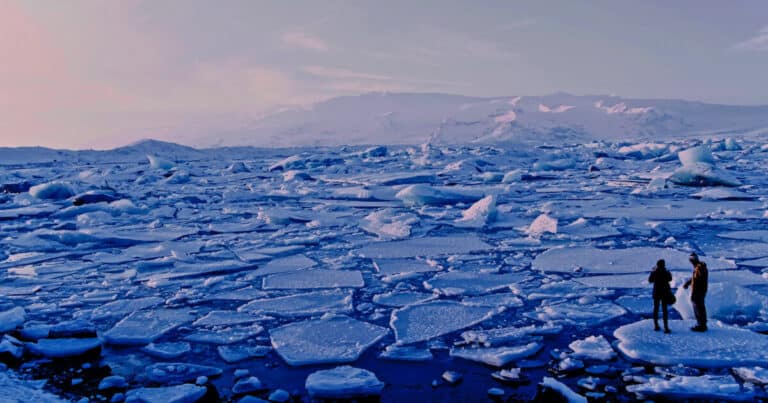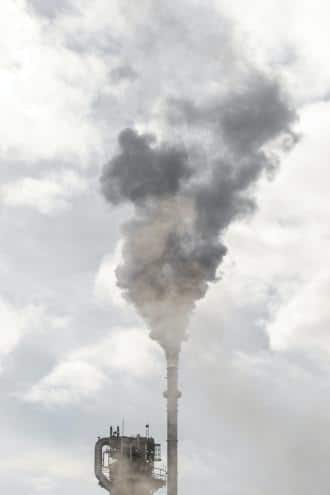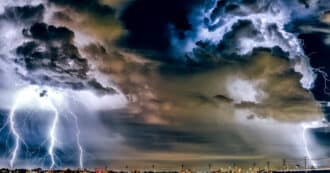By Matthew Mausner and Yonatan Neril – Understanding the differences between global warming vs climate change is key to addressing the environmental challenges we face today. These two terms are often used interchangeably, yet they carry distinct meanings and implications.
According to NASA, global warming refers to “the long-term heating of Earth’s climate system observed since the pre-industrial period (between 1850 and 1900) due to human activities, primarily fossil fuel burning, which increases heat-trapping greenhouse gas levels in Earth’s atmosphere.”
And NASA defines climate change as “long-term change in the average weather patterns that have come to define Earth’s local, regional and global climates.”
When people today commonly use the terms global warming and climate change, they are referring to the same thing: the warming of average global surface temperature by about 1 degree Celsius (1.8 degrees Fahrenheit), mostly due to burning of fossil fuels like coal, oil, and gas. Global warming has only become an issue in recent history because we are now releasing greenhouse gases into our atmosphere at such high rates.
The Difference Between Global Warming and Climate Change
What is the difference between global warming and climate change? Because of the complexities of Earth’s climate, a term like “climate change” is more neutral and therefore more accurate. The consequences of human-generated emissions are resulting in both short-term and longer-term fluctuations that don’t fit such a neat term as “warming.” For example, much of the U.S. has experienced more intense winter storms and cold in recent years, which is also attributed to the effects of climate change.
There is very little debate anymore among scientists about the validity of stating that human-generated emissions are causing global climate change.
Climate Change and Global Warming as Catchall Terms
Both “global warming” and “climate change,” instead of simply describing human-caused changes to the climate, have become larger summary terms that speak to human degradation of the natural environment. The scientists who study climate change—including oceanographers, atmospheric scientists, meteorologists, and computer scientists—understand Earth as an interconnected ecosystem, where the ocean, climate, forests, sea life, and land life all relate to each other and are interdependent.
A Brief Look at Global Climate Change in the Past Century
—As far back as the 1920s, scientists noticed that the “El Nino” oscillation—a shift in Pacific Ocean temperatures and patterns—was affecting climate over a several year cycle.
—In the 1950s, governments led by the U.S. started attempting to model or predict the weather using computers.
—By 1979, every significant scientific basis for understanding human-caused climate change was established.
By the early 1980s, different strands of all this progress came together. Scientists succeeded in both gathering enough data and constructing mathematical models so that weather-predicting computers could accurately predict essential elements of the climate-affecting El Nino. One of the most important factors in these predictions was the amount of “greenhouse gases,” particularly carbon dioxide, in the atmosphere.
Higher amounts of carbon dioxide and other greenhouse gases due to human activities could now be scientifically shown to be causing global warming and raising the earth’s average global temperature. The reason was that the gases trapped certain kinds of radiation and heat in the Earth’s atmosphere. Using this groundbreaking analysis, scientists began to predict global warming, sea level changes, further surface temperature rises and more.
They revealed some alarming news: human-generated emissions of greenhouse gases were already having a massive effect on our atmosphere, the affect is accelerating, and the impact may lead to catastrophic changes in our climate, ultimately making the entire planet less able to support human (and other) life as we know it.
Which Term to Use: Global Warming vs Climate Change
Some scientists, have gently pushed back against use of the term “global warming” and favor the term “climate change” which can encompass the great complexity of global climate. Some people take issue with “global warming” since warmer days are frequently considered more desirable, and things such as warm baths are well liked. But some also take issue with the term “climate change” since change also be considered a positive thing, as in social change.
Climate scientist Dr. Katherine Hayhoe prefers the term “global weirding” since it communicates nature going out of balance. The large British newspaper The Guardian uses terms like “global heating” and “climate emergency.”
Climate Change or Global Warming: What Matters is Whether We Act
If we fail to act, and keep letting fossil fuel use raise the global temperature, then no matter what terms we use, we may see disastrous, runaway feedback loops from global warming. Glaciers and even the polar ice caps would melt, the Gulf Stream current would stop its flow of heat and moisture across the Atlantic Ocean, and we could face apocalyptic events on the order of a 20-meter rise in sea level, a re-glaciation of Europe (as shown in Al Gore’s documentary “An Inconvenient Truth”), and massive climate shifts that might make many current population centers uninhabitable.
More and more people today are fearing that our own modern, global civilization, may also be headed for a similar fate due to our own widespread unsustainable activities. But we still have the ability to change course for a sustainable future, and avert climate change.
Global Warming, Scientists, and the Power to Affect Change
Gus Speth, former dean of the Yale School of Forestry and Environmental Studies, says, “I used to think that top global environmental problems were biodiversity loss, ecosystem collapse and climate change. I thought that with 30 years of good science, we could address these problems, but I was wrong. The top environmental problems are selfishness, greed, and apathy, and to deal with these we need a spiritual and cultural transformation. And we scientists don’t know how to do that.”
Scientific research has powerfully revealed the widespread degradation of nature, yet scientists’ ability to motivate society to curb climate change is limited. Religious belief and understanding have the potential to move many more people worldwide to action on global warming than science has done.
The Pew Research Center’s Forum on Religion and Public Life estimates that 84 percent of the 2010 world population are affiliated with a religion. More than 76 percent of Americans are religiously affiliated, according to a 2014 Pew study. Nonetheless, religions have so far failed to substantially integrate scientific and ecological findings into their preaching, teaching, and living.
Climate Change and The Role of Faith Communities
The environmental movement has failed to effect transformational change in the past 50 years partly because fear of the darkness of ecological collapse has driven the movement. The light of spirituality can spark a more hopeful approach with deeper and broader effect. Here are three reasons why.
First, religion can persuade people to consume in moderation as they find true satisfaction in spirituality, community, and family. Spiritual living should bring consciousness to our consumption. To rise to this ultimate challenge for human civilization, we have to raise our spiritual awareness and maturity.
Second, religious teachings help instill foresight and long-term thinking. The rabbis of the Talmud taught about 1,500 years ago: “Who is the wise person? The person who can see the effect of their actions.” We must put both the present and future of our children and grandchildren first, above expanding our own standard of living.
Finally, and perhaps most importantly, religion embodies hope. Some people – out of terror, anger, or depression – despair of our ever returning to personal and planetary balance and sustainability. Yet, as Rabbi Jonathan Sacks taught, “Hope is a human virtue, but one with religious underpinnings.”
Religion’s Power to Help Curb Global Warming and Climate Change
The power of faith communities is a tremendous yet under-utilized and under-leveraged resource for climate action. Religion may one of the most critical forces in the world that can affect the change we need to see at the global scale. Religious institutions have:
- membership that in the aggregate include billions of people;
- tremendous land and buildings they own and use;
- massive educational systems and media channels.
- partnerships from the level of local communities to international NGOs.
Religion informs values, which inform environmentally conscious behavior. For example, clergy and houses of worship can promote a multiplier effect to reduce personal consumption of fossil fuels, lowering greenhouse gas emissions, and tackling global warming and climate.
Religion is a fundamental part of and key motivator for many people’s lives. Religious institutions are a tremendous vehicle to influence mindset and values, and give people a wider and longer-term view of what they truly value. A mass multi-faith movement can serve as a distribution channel for key messages, including living sustainably and curbing global warming and climate change .
Our Hope for a Future Free of Climate Change
At this moment in history, in contrast to our use of fossil fuels for energy, we need a major infusion of spiritual energy—promoting faith groups’ work to inspire behavioral change for to address global warming and climate change. This is a movement whose time has come. We need to leverage the determination of people of faith, the moral authority of religious leaders, and the credibility of leading scientists to mobilize communities worldwide for environmental sustainability. Inspiring and galvanizing faith communities to move the needle on sustainability is a deeply needed and worthwhile effort.
* Featured image source







